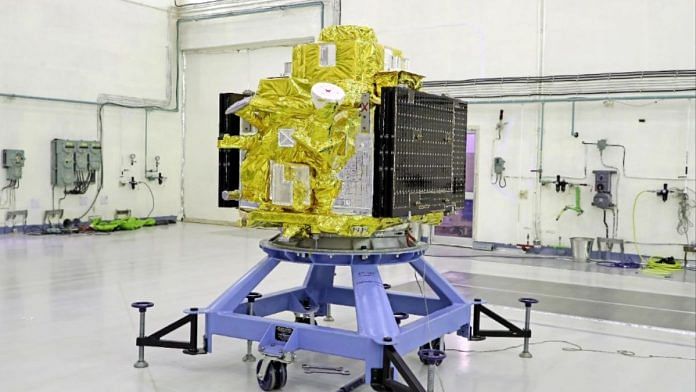Bengaluru: India will ring in the new year with a historic launch of its first X-ray space observatory — XPoSat — which will probe the brightest and most energetic phenomena in the universe using X-rays.
The 469 kg spacecraft will carry two instruments (or payloads) that will observe X-rays from various cosmic sources and reveal information about their properties and behaviour.
The mission is scheduled to launch on 1 January, 2024, from Sriharikota on the PSLV-C58 rocket. The launch window timings are yet to be announced.
The observatory is expected to be placed in a circular low Earth orbit (LEO) of 500-700 km altitude, following which the XPoSat will begin sending data for at least five years.
The mission is led by the Raman Research Institute (RRI) in Bengaluru, in collaboration with the Indian Space Research Organisation’s (ISRO) UR Rao Satellite Centre (URSC), also in Bengaluru. The URSC has developed the X-ray Spectroscopy and Timing (XPECT) instrument, while the RRI has built the Polarimeter Instrument in X-rays (POLIX) instrument.
“I am singularly impressed by the fact that not just the laboratory model, but the qualification model, and even the final flight model for POLIX, was fabricated and assembled at Raman Research Institute. It reflects the power of the healthy RRI culture of encouraging harmonious growth of science and engineering,” Tarun Souradeep, director of RRI, told ThePrint Thursday.
The XPoSat mission will be India’s third space observatory, after the AstroSat mission, which was launched in 2015, and observes astronomical objects in multiple wavelengths of light and electromagnetic radiation, and the Aditya-L1 mission, which was launched in 2023 and observes the sun.
Also Read: ISRO awarded Leif Erikson Lunar Prize for its Chandrayaan-3, India’s 3rd mission to the Moon
Why X-rays?
X-rays are a type of electromagnetic radiation that has very high energy and can penetrate through matter. X-rays are emitted by some of the most extreme and powerful objects in the universe, such as neutron stars, pulsars, and supernovae. By studying the X-rays from these sources, scientists can learn more about their nature and origin.
One of the key aspects of light and electromagnetic radiation is their polarisation, which is the orientation of the electric field of the light wave relative to the magnetic field. The polarisation of X-rays can reveal the structure and geometry of the magnetic fields around the sources, as well as the mechanism of X-ray emission.
Sources that the spacecraft would study would be objects that are some of the brightest in the universe. The observatory will fix its X-ray gaze on high-energy, intensely bright, extremely powerful sources, like neutron stars, pulsars, and supernovae.
These objects would be observed when the observatory is on the other side of the Earth from the source, to observe X-rays coming from around the Earth. To do this, XPoSat will be placed in a circular LEO at 500-700km altitude.
The XPoSat observatory will use its two instruments to measure the polarisation and the timing of X-rays from various sources.
The POLIX is the main instrument and is a polarimeter, which will measure the angle and degree of polarisation of the incoming X-rays. The XPECT instrument is a spectrometer, which will measure the frequency and intensity of the X-ray emissions and their variations over time.
The scientific objectives of the mission include studying the magnetic fields of neutron stars, the X-ray emission process in pulsars, the X-ray emission from the pole of a neutron star, and understanding if supernova remnants emit energy more as heat or as non-thermal energy.
The two instruments will work in the medium X-ray range (0.8 to 30 keV), and complement the X-ray data collected by NASA through its Imaging X-ray Polarimeter (IXPE, 2 to 30 keV) mission launched in 2021.
(Edited by Richa Mishra)
Also Read: NASA cat-apulted a cute video to Earth from a spacecraft 31 million km away. Why this is big



